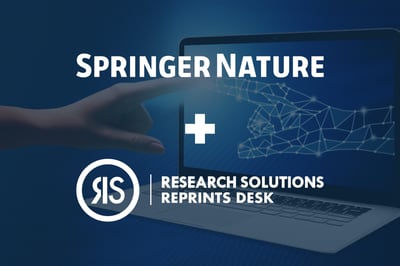2020 is behind us, but the global disruptions will have a lasting impact on the life sciences industry. And that's not all bad. Many of the new technologies and processes companies put in place to address a host of pandemic-related challenges may—in an unexpected twist of fate—usher in an era of digital transformation for life sciences companies.
Here are five technology-driven trends to watch in 2021:
Telehealth: Spurred by the COVID-19 Public Health Emergency (PHE) and relaxed government regulations, the U.S. saw a major expansion of telehealth in 2020. Although some of the government measures are only temporary, the trend toward digital and remote care—for everything from diagnosing and treating patients to running clinical trials—will continue to gain traction this year.
"As fraught as 2020 has been, we will nonetheless look back on it as the year that ushered in pioneering telehealth policies in America. When it comes to telehealth, the agile manner in which the health care industry pivoted to embrace technology and meet patient care demands is among the more dramatic and positive changes that 2020 brought for health care providers and patients. As we look forward to 2021, providers should continue to follow developments in this rapidly evolving space, paying attention to what changes are here to stay, which will expire, and which may ultimately be made permanent."
Digital Therapeutics: A sub-trend within telehealth is digital therapeutics (DTx)—software-driven therapies, such as wearable biosensors tracked via smartphone apps, that help improve patient care outside the hospital walls.
"DTx vendors leverage their tech to treat chronic conditions, which gobble up the lion's share of the US' healthcare spending. The surging prevalence of chronic conditions combined with long term effects of the pandemic is fueling growth in the global DTx market . . .
Pharma companies have been strategically pouring cash into DTx firms to capture a slice of the growing DTx market. And with the FDA greenlighting multiple DTx treatments, pharma companies can invest in DTx solutions with more confidence that they'll see a return on investment (ROI)."
Precision Medicine: Increasingly, life sciences companies are focusing their R&D efforts on customized medicine and treatments, rather than mass-produced blockbuster drugs. An emerging trend with transformational potential, precision medicine is continuing to gain traction thanks to advances in genome sequencing and big data analysis.
"The rising demand for preventive care and advances in next-generation sequencing (NGS) technologies have resulted in an unprecedented proliferation and deluge of genomic sequence data, thereby driving the market growth of the precision medicine sector. In the last 15 years, the cost of mapping a human genome has fallen from US$ 100 million to below US$ 1,000, allowing the use of data from patient DNA to become a significant viable method to provide precise, actionable recommendations before symptoms occur. The growth of the industry is also fueled by scientific discovery, alignment of incentives, regulatory decisions, consumer interest and demand, and advances in technology."
Robotic Process Automation (RPA): RPA is an AI-driven technology that uses machine learning to automate high-volume tasks that have traditionally been performed by humans. According to a recent global report, the RPA software market revenue was $1,340 million in 2019, and will grow to $18,689 million in 2025.
"Software robots can conduct menial tasks like data entry or quality control very fast and with maximal accuracy. This efficiency bonus changes into substantial savings for clinical trials. Also, bots can perform a large-scale interpretation and processing of clinical trial data, for instance, radiology reports, and facilitate the identification of high-risk abnormalities in images."
Natural Language Processing (NLP): NLP—which like RLP, uses machine learning to automate high-volume, repetitive tasks—offers exceptional promise for the life sciences industry. Today’s rapid advancements in text mining and other NLP-based processes enable researchers and scientists to gain meaningful insights from massive amounts of diverse, text-based data—such as scholarly journal articles, clinical records, and even social media content.
"Factors such as the rising trend of the implementation of artificial intelligence in natural language processing in the healthcare industry and the growing trend in the utilization of NLP in machine translation and information extraction procedures are anticipated to promote significantly towards the growth of the global NLP in healthcare and life sciences market.
Additionally, the rising trend of the utilization of connected devices in the healthcare industry, followed by the growing IT infrastructure across nations around the globe and the rising trend of digitalization are some of the factors anticipated to drive the growth of the global NLP in healthcare and life sciences market."
Life sciences companies have been among the most disrupted by the COVID-19 pandemic. Although vaccines are now being distributed, the crisis is far from over, and there’s no way to predict how 2021 will play out. If we look for the silver lining, however, one thing is clear: the global crisis pushed pharma, biotech, and other life sciences companies into an accelerated phase of technology innovation and adoption. Indeed, from telehealth to AI, the benefits of digital transformation—including improved operational agility and increased productivity—are proving essential for life sciences companies as they deal with a global health crisis, industry upheaval, and workplace disruptions.
Leah Rodriguez | VP of Marketing
Leah has over 17 years of experience in publishing and software with various roles leading and developing marketing teams. Prior to joining Research Solutions, she was at Nature Publishing Group, launching marketing for their open access journals, Nature Communications and Scientific Reports and at PLOS, developing...


